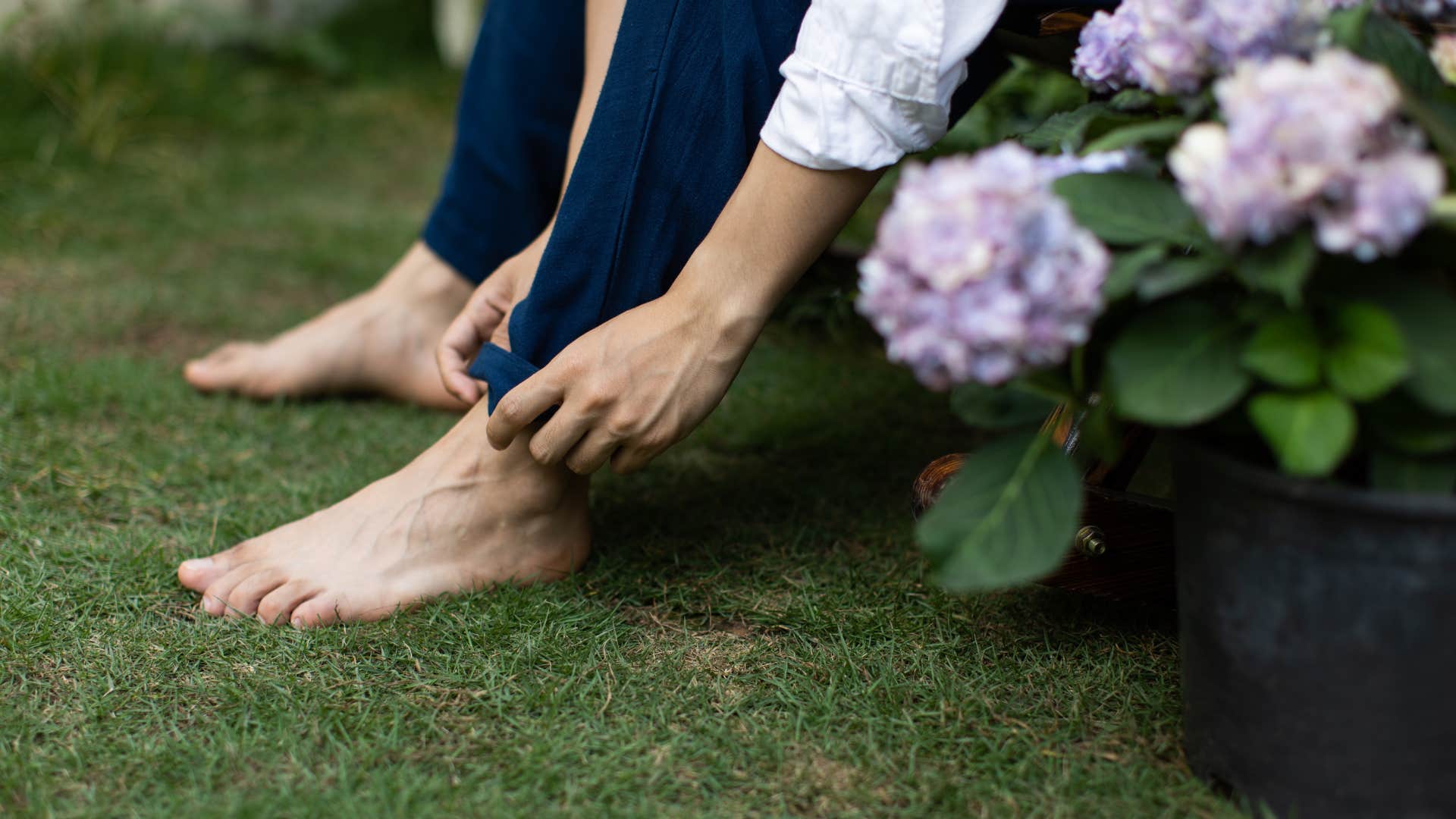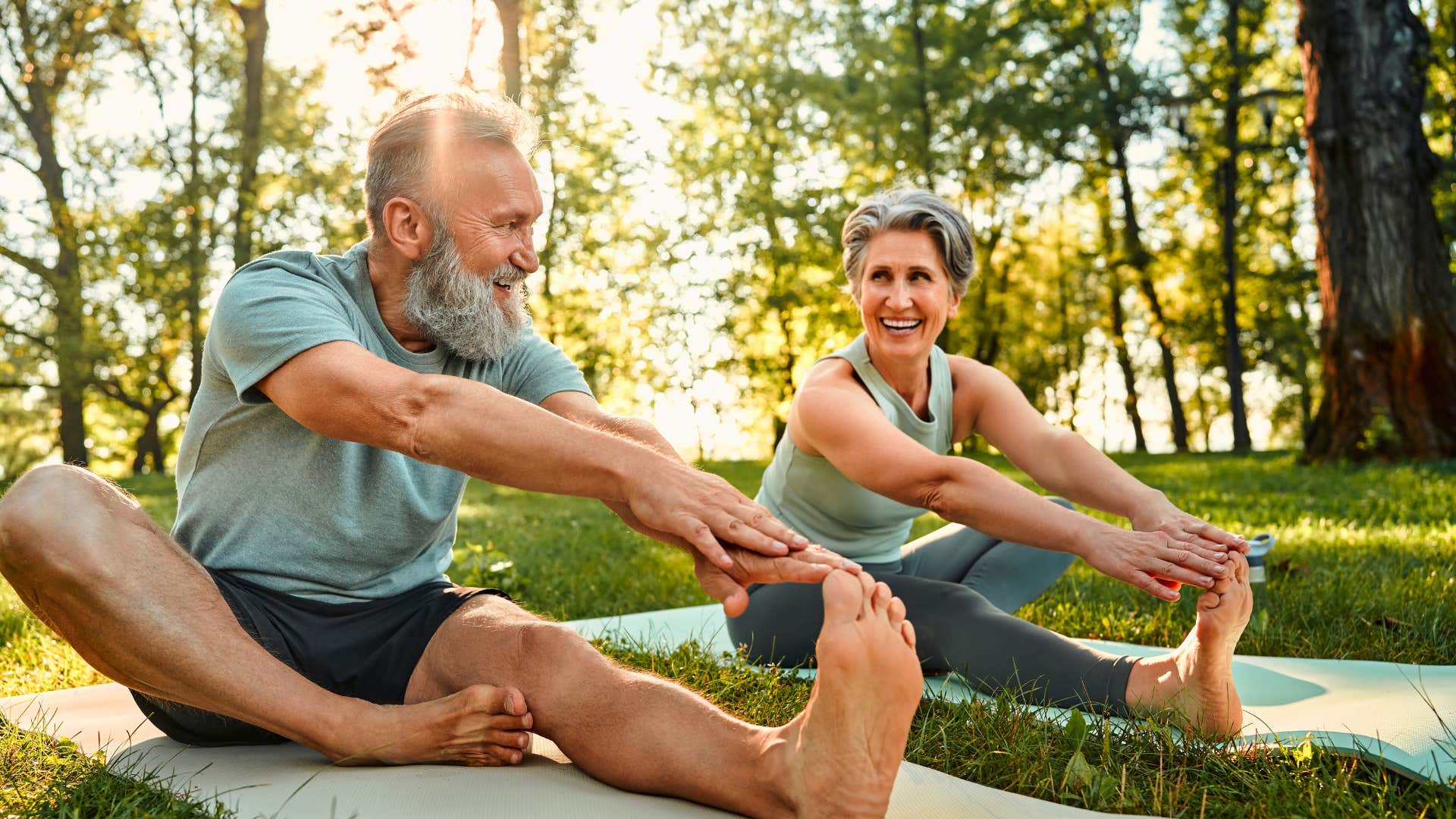The Art Of Being Calm: 6 Simple Habits Of Naturally Calm People
Your anxiety doesn't have to run your life.
 progressman | Shutterstock
progressman | Shutterstock As many as 40 million people have been diagnosed with anxiety in America, and many of those people have never learned how to deal with anxiety or fend off an anxiety attack before it completely takes over their emotional state. Whether or not you've been diagnosed with an anxiety disorder, if you suffer from panic attacks and frequently get overwhelmed with emotional grief, you know how frustrating it can be to deal with it.
Fortunately, there are ways you can calm your stress thanks to grounding techniques — strategies of connecting to the present moment that can help you manage anxious feelings without medication. It can be hard to manage these emotions, particularly in our current culture, where it seems like the world is more competitive, scary, and dangerous than ever before. Luckily, using grounding techniques can help calm the physical symptoms of anxiety and stop panic attacks in their tracks.
The art of being calm — 6 simple habits of naturally calm people:
1. They use their senses to stay present
 Rido / Shutterstock
Rido / Shutterstock
Take a moment to connect with each of your senses. Count one thing you can taste, find two things you can smell, notice three things you can hear, find four things you can see, and find five textures you can touch.
The most important part of this is taking the time to do each one. Don’t worry if you can’t find the right number of things — just see what you can and move on to the next, staying in the present moment.
2. They plant their feet on the ground
 Yunjian / Shutterstock
Yunjian / Shutterstock
While sitting in a chair, take several deep breaths and press your feet hard into the ground. Take a moment to really feel the sensation of connection between your feet and the ground, and feel connected to the earth.
Even better, take off your shoes and socks and go through these steps outside somewhere!
During an anxiety attack, your mind often fixates on what-if scenarios and spirals of catastrophic thoughts. Research has shown that the act of feeling your feet on the ground forces your attention to your physical body and away from the cycle of anxious thinking.
3. They walk with awareness
 ViDI Studio / Shutterstock
ViDI Studio / Shutterstock
Take a moment to walk around your workplace, home, or outside. While walking, focus only on the immediate things you are seeing, smelling, sensing in your body, and hearing. Focus on how amazing it is that your body can move you from place to place, and try to clear your mind.
4. They stretch out tension
 Harbucks / Shutterstock
Harbucks / Shutterstock
Take a minute to stretch your body. While stretching, focus on holding the stretch a little longer to allow you to feel the sensations in your body deeply.
Take deep breaths and try to release the tension you might be holding as you stretch. This one is great because you can do it at your desk at work.
Stretching can activate the body's rest and digest functions. Research shows that this promotes feelings of calm and relaxation, which counteract the effects of the fight or flight response that is often triggered during anxiety.
5. They turn to water
 PeopleImages / Shutterstock
PeopleImages / Shutterstock
It might sound silly, but find something you can do to connect with water. Take a bath or shower, wash your hands or face in cold water, or drink a glass of cold water.
According to a 2018 study, stimulating the vagus nerve controls the body's rest-and-digest response, which signals the body to relax. Splashing cold water on your face or drinking ice water can activate this nerve, which slows your heart rate and has an immediate calming effect.
6. They find something that makes them smile
 insta_photos / Shutterstock
insta_photos / Shutterstock
You could look at old pictures and try to remember enjoyable times in your life, or you could just watch a funny movie or video clip. The goal is to release your feelings of anxiety and let yourself be distracted so that you can allow your body to become calmer again.
The most important part of these strategies is that you focus on your body and the present moment, actively working to release your feelings of anxiety. Take deep breaths in and out during any of the exercises. Having anxiety is okay, and you are going to be okay.
Remind yourself that you are okay and that anxiety is okay, just excruciatingly uncomfortable for a period of time. The more you remember that these feelings are temporary and will pass, the quicker they actually do pass.
Also, if you are struggling with thoughts during this time, bring your focus back to your body's sensations. Repeat a mantra such as, “I am going to be okay,” or “This too shall pass.”
Keep in mind that these strategies will work best when you practice them periodically. If you normally experience anxiety, try practicing at least once daily for the best results. Be consistent and patient in your efforts — it might take some time for you to learn which strategies work best for you!
Erica Wollerman is a licensed clinical psychologist and the founder of Thrive Therapy Studio.

